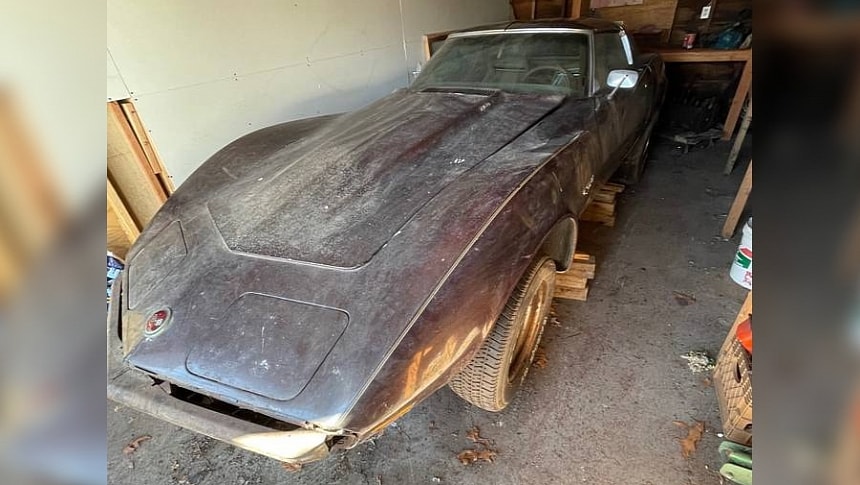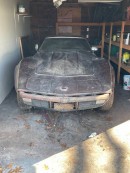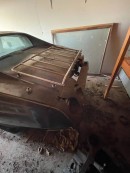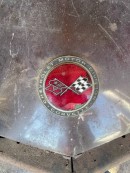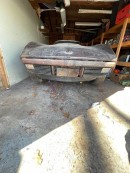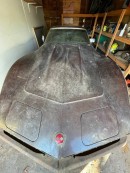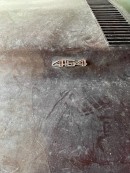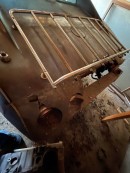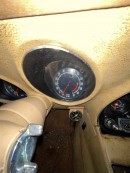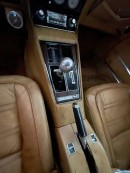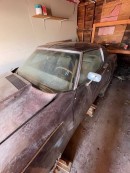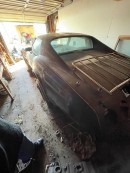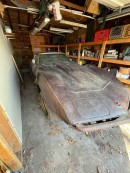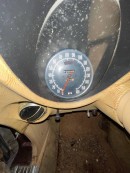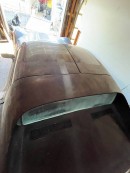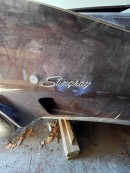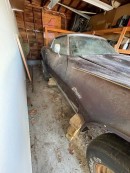Chevrolet produced 37,502 Corvettes in 1974, the last year when a big-block (the big-block, in fact) was fitted to the iconic sportscar. The 454 was America’s Sportscar’s farewell to the era when gas and tire smoke were less significant than fun and quarter-mile games. Less than 10% of the ‘Vettes of ’74 had the big V8 under the fiberglass hoods, though, as the big lump of iron was a pale shadow of its former 1970 self.
In 1970, when the muscle car megafauna was roaming the streets without a clue of the extinction lurking just over the horizon, General Motors went all in and put the big-blocks at stake. Chevrolet was given the green light for the operational use of the 454-cubic-inch V8 (7.4 liters), and it exploited the motor without remorse.
Between 1970 and 1975, the 454 V8 saw three iterations: the LS5 and LS6 came out first, while the LS4 debuted in 1973. The Corvette didn’t enjoy the fabled powerhouses for long, as the 7.4-liter motors were phased out from Chevrolet passenger cars by ever-tightening pollution-reducing commands. Strangely, the Corvette drew the short stick, getting its last big-block 454 in 1974.
In less than a decade, the Corvette had gone from the naval cannon L-88 V8 from 1967-1969 to small-block-only offers. Not that its signature 350-cube (5.7-liters) introduced in ’67 was a slug, but it was a bit frustrating to see how other Chevys continued with the 454 for one more year. The trucks had it even better, as the big-block soldiered on for 15 more years in pickups and heavy trucks.
One of the 3,494 Corvettes equipped with the 454-incher in 1974 has made it to this day, with its factory-installed drivetrain still with the car. With, not in, as the 700-lb (around 320 kg) V8 has been out of the car for a while. The owner bought the coupe in the early 80s and kept it in storage ever since. He doesn’t mention when exactly he took the dinosaur out of its bay or why but notes that the motor was running.
I would assume the car was scheduled for restoration, given that the owner bagged and labeled the parts, but that’s just a hopeful guess. The odometer displays 72,046 miles (115,922 kilometers), all served with the original four-speed manual transmission. The original wheels, radio, and emissions-reducing equipment are no longer in or on the car, and its bumpers have lost the battle with time.
Starting in 1974, the chrome bumpers that all Corvette fans thumb up became history. The shine-fading shift began in 1973 when the front bumper was made of urethane. In the following year, the rear protective element followed suit. Specifically, the bumper covers were no longer metal but tapered urethane, color-keyed to the body. The actual impact bar, mounted on two slider brackets and hidden behind the elastic trim pieces, was made of aluminum.
For some reason, the urethane on this particular Corvette from Brick Township, New Jersey, has vanished over time, but the car appears to have no other flaws. The air conditioning, power windows, and power steering were expensive additions to the $6,001.50 base price. The owner says the car was loaded but only notes the three extras and stresses out the ‘excellent’ condition of the frame and birdcage. He also asks $6,400 for the car but will settle for the best offer from a serious buyer.
Between 1970 and 1975, the 454 V8 saw three iterations: the LS5 and LS6 came out first, while the LS4 debuted in 1973. The Corvette didn’t enjoy the fabled powerhouses for long, as the 7.4-liter motors were phased out from Chevrolet passenger cars by ever-tightening pollution-reducing commands. Strangely, the Corvette drew the short stick, getting its last big-block 454 in 1974.
In less than a decade, the Corvette had gone from the naval cannon L-88 V8 from 1967-1969 to small-block-only offers. Not that its signature 350-cube (5.7-liters) introduced in ’67 was a slug, but it was a bit frustrating to see how other Chevys continued with the 454 for one more year. The trucks had it even better, as the big-block soldiered on for 15 more years in pickups and heavy trucks.
One of the 3,494 Corvettes equipped with the 454-incher in 1974 has made it to this day, with its factory-installed drivetrain still with the car. With, not in, as the 700-lb (around 320 kg) V8 has been out of the car for a while. The owner bought the coupe in the early 80s and kept it in storage ever since. He doesn’t mention when exactly he took the dinosaur out of its bay or why but notes that the motor was running.
I would assume the car was scheduled for restoration, given that the owner bagged and labeled the parts, but that’s just a hopeful guess. The odometer displays 72,046 miles (115,922 kilometers), all served with the original four-speed manual transmission. The original wheels, radio, and emissions-reducing equipment are no longer in or on the car, and its bumpers have lost the battle with time.
Starting in 1974, the chrome bumpers that all Corvette fans thumb up became history. The shine-fading shift began in 1973 when the front bumper was made of urethane. In the following year, the rear protective element followed suit. Specifically, the bumper covers were no longer metal but tapered urethane, color-keyed to the body. The actual impact bar, mounted on two slider brackets and hidden behind the elastic trim pieces, was made of aluminum.
For some reason, the urethane on this particular Corvette from Brick Township, New Jersey, has vanished over time, but the car appears to have no other flaws. The air conditioning, power windows, and power steering were expensive additions to the $6,001.50 base price. The owner says the car was loaded but only notes the three extras and stresses out the ‘excellent’ condition of the frame and birdcage. He also asks $6,400 for the car but will settle for the best offer from a serious buyer.
